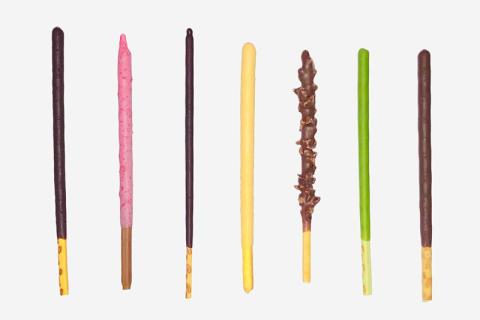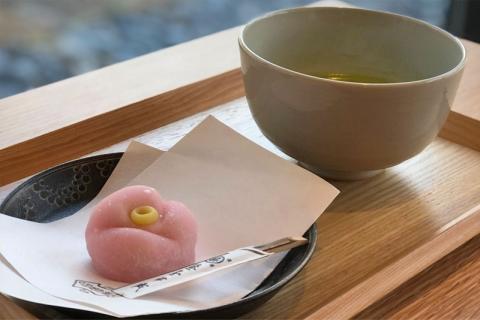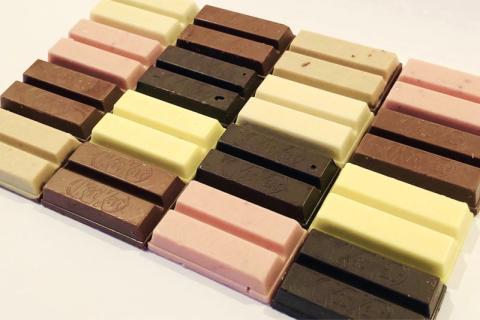
Wasabi, miso soup, soy sauce, sake... these all might be served up in the course of a classic Japanese meal. But as dessert or in candy? While it may seem shocking, in recent years Japanese candy makers have innovated their sweet treats with some of the most surprising flavors imaginable – particularly beloved brands like Pocky and Kit Kat. Ranging from the already-iconic (matcha Pocky) to truly provocative (shichimi hot-pepper Kit Kat), these limited-edition snacks have now become a global phenomenon, often going viral on social media and drawing more attention to Japan’s tireless innovation of “pop culture” – even in something as simple as candy.

Of course, traditional Japanese desserts have had a range of flavor profiles – characterized both by sweet yet delicate tastes like fresh fruit, sakura mochi, and rice candy – but also by savory flavors like red bean and black sesame. With the introduction of Western-style confectionary in the Meiji period (1868-1912), however, the majority of these candy types skewed closely to the sugar-forward flavors of fruit gum-drops and pastilles, along with caramels, and of course, chocolate. In the post-WWII period, as mass manufacturing expanded and Western trends took a deeper hold, two of the companies now best known for avant-garde tastes also began with these standard flavorings before branching out.
In 1966, the well-established candy manufacturer Glico (founded in 1922 in Osaka) introduced Pocky – a thin, crisp biscuit stick coated in chocolate. It became an instant hit with Japanese consumers due to its unique combination of crunchy texture and sweet flavor, not to mention the cute packaging. In the 1970s, the Pocky line expanded to almond (with crushed almonds on the outside of the chocolate) and strawberry, as well as variations on taste, size and shape to appeal to different demographics. The fashionable “Little Pocky” was introduced to target young female consumers, while “Pocky Bitter” was branded to appeal to men. Glico also laid the groundwork for Pocky as a global product, opening subsidiaries in Thailand and Europe in the 70s and 80s, China in the 90s, and the US in 2003. More flavors started to proliferate in recent decades – perhaps spurred by a sense of rivalry with a similarly “crunchy” competitor that was doing the same.

Kit Kat is a chocolate-covered wafer bar that emerged in the UK in 1935 (but originally called “Rowntree's Chocolate Crisp,” it was renamed as “Kit Kat” in 1937), and was first imported to Japan in the 1970s. At the time, the bars were only available in a few basic flavors, such as milk chocolate and dark chocolate. However, the Japanese market quickly took to the candy, and soon, Nestlé Japan was experimenting with new and innovative flavors to keep interest up. Some of the earliest flavors to be introduced were green tea, strawberry, and sweet potato. Over the years, the number of flavors has continued to grow, numbering at more than 400, with some of the most unusual and exotic flavors becoming bestsellers (helped by the fact that many are limited-edition and so create a sense of urgency among candy fans to snap them up as soon as possible).

Today, the most edgy and surprising flavors of both Kit Kat and Pocky have become beloved not just domestically, but throughout the world, with many people traveling to Japan just to try them. Indeed, special flavor candy “tourism” could catch on among tourists within Japan, since many regions in Japan have their own signature flavors, like Yubari melon Pocky, and Kit Kat’s Hiroshima momiji manju (maple-leaf steamed cake). There are flavors for all ages to enjoy, as well as those targeted toward those of drinking age (like Pocky variations designed to be paired with alcoholic beverages, such as “Goddess Ruby Pocky,” with notes of berry, pepper and cheddar, created to accompany wine). Kit Kat has even teamed up with renowned pastry chef Yasumasa Takagi to keep innovating new flavors ranging from cassis to “Volcanic Flavor Series Papua New Guinea” (to date, the chef has invented over 50 flavors).
The influence of Japanese candies on the rest of the food world is significant, leading to more bold, unique flavors appearing in the snacks of many other countries – from matcha cupcakes to Mexican guajillo chili-infused chocolate bars. So where will the trend go next? There is no doubt that the popularity of unusual candy flavors will continue to grow, as customers continue to be intrigued by the novelty of unusual taste combinations, and, as technologies advance, manufacturers will be able to push the envelope even further. In the meantime, the snack shelves of any given konbini (convenience store) in Japan will likely keep changing with the seasons and the trends, as any flavor under the sun eventually finds its spotlight in a limited-edition candy.

